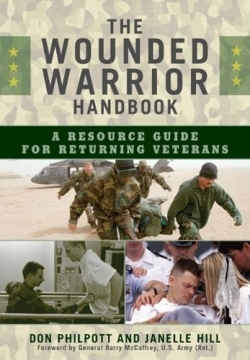
The Wounded Warrior Handbook
A Resource Guide for Returning Veterans
For the 25000 US service personnel who have been injured since the invasion of Iraq in 2003 a wide ar-ray of medical and other assistance is available. But the biggest obstacle for the wounded and their family members is often a daunting maze of red tape. The Department of Defense (DoD) and the Veterans Administration (VA) have published guides handbooks Web sites and toll-free numbers but these aids often add to the confusion. To address the need for a roadmap Don Philpott and Janelle Hill have assembled the Wounded Warrior Handbook: A Resource Guide for Returning Veterans. Philpott is a veteran journalist and editor of the Homeland Defense Journal; Hill is a consultant and US Marine Corp Volunteer with a degree from National Defense University. With the backing of Government Institutes and Scarecrow Press and cooperation from the DoD and VA Philpott and Hill have assembled a current and comprehensive yet independent resource that may prove to be indispensable to wounded veterans from Iraq and Afghanistan as well as from prior US military campaigns.
This Handbook first addresses the recovery process from the traumatic injury event onward for the active serviceman or woman. It gives practical advice on everything from spotting the symptoms of de-pression to travel instructions for visiting family. It explains the terms of separation from military service and the process for determining and appealing the so-important physical disability status. Much of the Handbook‘s emphasis is on the service member’s transition from medical retirement or separation to rehabilitation continuing care outpatient care job counseling and training and employment. One useful chapter includes a discussion of financial legal and tax issues faced by active and discharged troops. Finally a chapter on bereavement covers everything from grief support to burial expenses military funerals and death benefits.
Contemporary warfare has seen a disproportionate amount of amputations loss of vision and traumatic brain injuries and the military health system and VA are responsive to the special needs of this population. The Handbook reflects the emphasis on care for emotional as well as physical trauma. “Multidisciplinary” medical teams include liaisons—professional social workers—who interface the wounded and their families with treatment and other relevant agencies and re-sources. Readers will discover that despite recent scandals in VA hospitals and the common perception that the US does not support its wounded veterans and their loved ones assistance in every conceivable aspect of transition and reintegration is available. And throughout Philpott and Hill offer names addresses phone numbers and Web addresses.
Disclosure: This article is not an endorsement, but a review. The publisher of this book provided free copies of the book to have their book reviewed by a professional reviewer. No fee was paid by the publisher for this review. Foreword Reviews only recommends books that we love. Foreword Magazine, Inc. is disclosing this in accordance with the Federal Trade Commission’s 16 CFR, Part 255.
